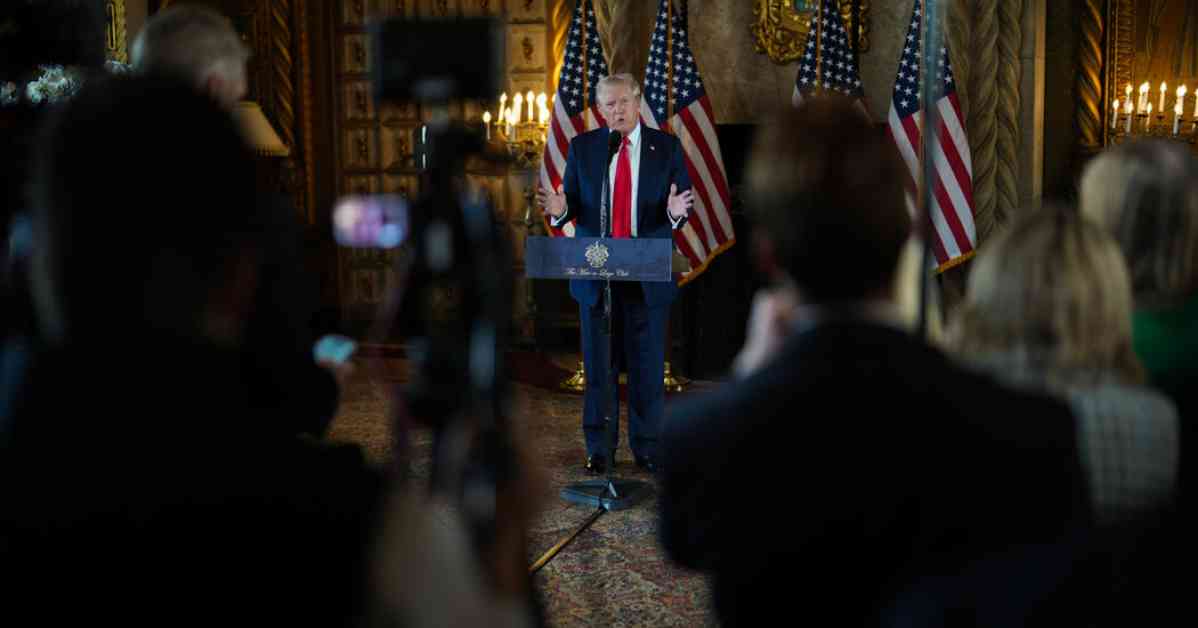Former President Donald J. Trump made headlines once again with a controversial news conference held at his Mar-a-Lago club in Florida. In the hourlong exchange with reporters, Trump criticized Vice President Kamala Harris, insulted her intelligence, and boasted about the size of his rallies. Let’s delve deeper into the analysis of this event and its implications on the political landscape.
Trump’s Attempt to Regain Attention
Former President Trump’s news conference was seen as a strategic move to reinsert himself into the national conversation, particularly at a time when Vice President Harris had been dominating headlines. By assailing Harris’s intelligence and taunting her for avoiding unscripted interactions with journalists, Trump aimed to shift the focus back on himself. The event, held at his Mar-a-Lago club, served as a platform for Trump to voice his opinions on various issues and position himself as a key figure in the political arena.
During the news conference, Trump expressed concerns about the state of the U.S. economy and painted a dire picture of the country’s future if he did not win the presidential election. His remarks on the economy and his false assertions about the peaceful transfer of power raised eyebrows and sparked debate among political analysts and commentators. Trump’s fixation on the size of his rally crowds and his comparison to historical events like Martin Luther King Jr.’s iconic speech added a controversial element to the proceedings.
Analysis of Trump’s Statements
One of the standout moments from Trump’s news conference was his criticism of Vice President Harris for not engaging with the media in a similar fashion. Trump’s assertion that Harris was not “smart enough” to handle unscripted questions drew sharp reactions from both his supporters and critics. The attempt to undermine Harris’s credibility and intelligence reflected Trump’s ongoing efforts to challenge the current administration and position himself as a formidable opponent in future political endeavors.
Moreover, Trump’s remarks on the U.S. economy and the perceived threats facing the country highlighted his continued engagement with national issues. By painting a bleak picture of the future under the current leadership, Trump sought to rally support among his base and present himself as a viable alternative to the current administration. However, the accuracy of his claims and the validity of his arguments were subject to scrutiny and fact-checking by journalists and experts.
Impact on Political Landscape
The news conference at Mar-a-Lago marked a significant moment in the evolving political landscape, with Trump’s return to the spotlight generating both interest and controversy. As Vice President Harris continued to solidify her position within the Democratic Party and gain momentum in the polls, Trump’s efforts to regain attention and challenge her dominance underscored the competitive nature of U.S. politics. The back-and-forth exchanges between Trump and Harris reflected the ongoing power struggles and rivalries that shape the political arena.
Furthermore, Trump’s decision to hold a news conference at his private club raised questions about the intersection of personal interests and political ambitions. The optics of using Mar-a-Lago as a backdrop for a political event added a layer of complexity to the narrative surrounding Trump’s post-presidential activities. Critics argued that Trump’s choice of venue and the tone of his remarks were reflective of a larger trend of blurring the lines between personal branding and political messaging.
In conclusion, Former President Donald J. Trump’s news conference at Mar-a-Lago stirred controversy and sparked debate about the future of U.S. politics. By criticizing Vice President Kamala Harris, boasting about his rally sizes, and highlighting his concerns about the economy, Trump positioned himself as a central figure in the national conversation. The implications of his statements and actions extend beyond the event itself, shaping the dynamics of political discourse and setting the stage for potential conflicts and rivalries in the months to come.


